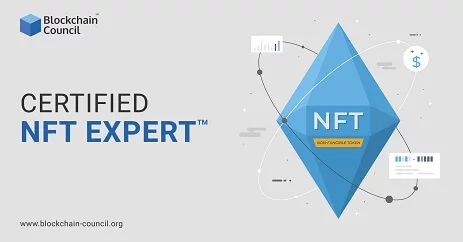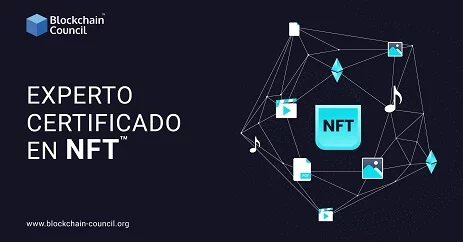
- Blockchain Council
- February 18, 2025
Introduction
In today’s digital age, website security has become a paramount concern for businesses, especially those handling sensitive customer data such as credit card numbers. Hackers are continuously evolving their methods to exploit any vulnerabilities they can find, and one such method gaining traction is the use of Google Tag Manager (GTM) to steal credit card information. This article explores how hackers exploit GTM to compromise customer data, the steps businesses can take to protect themselves, and the importance of cybersecurity education and certification.
What is Google Tag Manager?
Google Tag Manager (GTM) is a powerful tool used by website owners and marketers to add and manage website tags (snippets of code) without modifying the site’s code directly. It allows for easier integration of third-party tools, such as Google Analytics, Facebook Pixel, and more, without requiring a developer’s help. However, its flexibility and ease of use have also made it a target for malicious actors.
How Do Hackers Use Google Tag Manager?
Hackers have discovered that they can inject malicious scripts into the GTM container on a website. These scripts can then capture sensitive customer information, including credit card numbers, as users make purchases on the site.
Here’s how the process typically works:
- Accessing Google Tag Manager: Hackers gain access to the GTM container, often through phishing attacks targeting employees with admin privileges or through exploiting known vulnerabilities in the platform.
- Injecting Malicious Code: Once they have access, they inject malicious JavaScript into the GTM container. This script is designed to capture keystrokes, form data, and other sensitive inputs as users complete transactions.
- Stealing Credit Card Information: As customers enter their payment details on the website, the malicious script sends the data, including credit card numbers, to the hacker’s server in real-time, often without the website owner being aware of the breach.
- Exfiltrating Data: The hacker collects and stores the stolen data, which can then be used for fraudulent transactions or sold on the dark web.
Real-World Example: Case Study
In 2019, researchers uncovered a cyberattack on multiple e-commerce websites using Google Tag Manager as a vector to steal payment information. Hackers injected malicious scripts that were designed to capture credit card details when users entered their information on checkout pages. The breach went unnoticed for months, affecting thousands of customers.
Why is Google Tag Manager Vulnerable?
Several factors contribute to the vulnerability of GTM:
- Easy Access for Legitimate Users: GTM allows for easy updates and changes to tags without involving developers. This flexibility is beneficial but also makes it easier for hackers to exploit the system.
- Lack of Proper Security Measures: Many websites do not implement adequate access controls to GTM, such as two-factor authentication or limited access for admin privileges. This can make it easier for hackers to gain unauthorized access.
- Third-Party Integrations: GTM is often used to integrate various third-party tools, and if any of these tools have security vulnerabilities, they could provide hackers with a gateway into the system.
How to Protect Your Website from Malicious GTM Scripts
To mitigate the risk of GTM being exploited by hackers, businesses should implement the following security practices:
- Enable Two-Factor Authentication: Ensure that all users who have access to GTM accounts use two-factor authentication to add an extra layer of security.
- Limit Access to GTM: Only grant access to trusted employees or contractors. Use role-based access controls to ensure that only those who absolutely need access to GTM can make changes.
- Regularly Monitor Tags: Regularly audit and review the tags implemented on your site to ensure no unauthorized scripts have been added.
- Use Content Security Policies (CSP): Implement CSP to restrict where scripts can be loaded from, limiting the ability of attackers to inject malicious code.
- Educate Your Team: Provide training for employees on how to spot phishing attempts and other common attack vectors that hackers may use to gain access to your GTM account.
Steps to Secure Google Tag Manager
| Step | Action | Description |
| 1 | Enable Two-Factor Authentication | Add an extra layer of protection for GTM account access. |
| 2 | Limit User Access | Use role-based access controls and minimize admin privileges. |
| 3 | Regular Audits | Monitor and review all GTM tags to detect any unauthorized changes. |
| 4 | Implement Content Security Policies | Restrict the sources from which scripts can be loaded to prevent external scripts. |
| 5 | Employee Training | Educate employees on security best practices and recognizing phishing attempts. |
The Importance of Cybersecurity Certifications
To protect against these types of attacks, it is crucial for businesses to invest in cybersecurity training and certification. Blockchain Council offers the Certified Blockchain Expert™ (CBE) program, which equips professionals with the knowledge to understand and secure blockchain-based systems. Additionally, the Online Degree in Artificial Intelligence from Blockchain Council helps professionals leverage artificial intelligence to build secure systems.
Cybersecurity Certifications: A Pathway to a Safer Web
In addition to Blockchain Council’s certifications, other programs like the Certified Node.JS Developer™ and Certified React Developer™ from Global Tech Council provide valuable expertise in securing web applications and preventing cyberattacks. Universal Business Council’s Certified SEO Expert® and Certified Instagram Growth Expert programs also play a role in ensuring that digital marketing strategies are implemented securely.
Conclusion
Hackers using Google Tag Manager to steal credit card numbers is a real and growing threat that businesses must address. By understanding how these attacks occur and implementing robust security practices, businesses can protect their customers’ sensitive data. Additionally, cybersecurity certifications like the Certified Blockchain Expert™ (CBE) and Online Degree in Artificial Intelligence are critical in building a knowledgeable workforce that can defend against these types of attacks.
By following best practices and continuously investing in employee education, businesses can better secure their digital platforms and ensure that their customers’ sensitive information is protected.




































































 Guides
Guides News
News Blockchain
Blockchain Cryptocurrency
& Digital Assets
Cryptocurrency
& Digital Assets Web3
Web3 Metaverse & NFTs
Metaverse & NFTs
